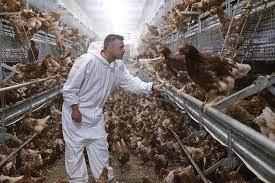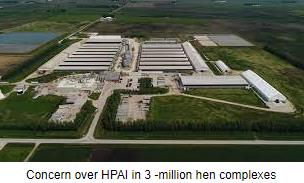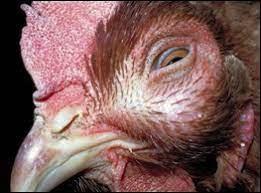 EGG-NEWS is indebted to Dr. Eric Gingrich for his October 10th report on layer health reflecting 2022-2023 as presented to the U.S. Animal Health Association Committee on Poultry and other Avian Species.
EGG-NEWS is indebted to Dr. Eric Gingrich for his October 10th report on layer health reflecting 2022-2023 as presented to the U.S. Animal Health Association Committee on Poultry and other Avian Species.
Data was collected from 21 members of the American Veterinarians in Egg Production (AVEP) with a 50 percent survey compliance rate.
The major conclusion from the survey included:
- Chick quality including runts and omphalitis has remained fairly constant from 2020 through the current year in both caged and cage-free pullets. Chick quality rated an importance score of 1.8 on a scale of 0 (with little or no importance to health and profitability) to 4 (very high importance).
- Among caged pullets the top four conditions and their scores were:- coccidiosis (2.7); infectious bronchitis (2.2); infectious coryza (2.0) and necrotic enteritis (1.9).
- For cage-free pullets, piling and suffocation were the most important conditions with a score of 2.8 followed by coccidiosis at 2.8 and infectious bronchitis and infectious coryza at 2.1.
- Post bacterin hepatopathy was noted as the sixth most important condition with values of 1.6 and 1.8 respectively for caged and cage-free pullets.
- Among caged layers, the four most important conditions were colibacillosis (3.1); infectious bronchitis (2.4); infectious coryza (2.6) and cannibalism (2.3).
- Among cage-free layers, the most important conditions were colibacillosis (3.2); cannibalism (3.1); piling (3.0) and mortality late in the production cycle (2.7) with infectious coryza (2.6) as an important infection.
Infectious coryza emerged as a concern in 2023 following outbreaks in Ohio and Indiana. It might be cynically stated that if coryza cannot be contained by prevailing standards of structural and operational biosecurity, these measures will most certainly not protect against avian influenza.

The principal disease of concern to the egg-production industry is obviously highly pathogenic avian influenza (HPAI) that advanced to 4, the highest level of concern. Emergency depopulation of caged layers as a high-ranked challenge is coupled with the risk of a reoccurring epornitic in coming months. Ventilation shutdown for caged flocks was applied in 2022 but there is growing opposition to the practice. This procedure has raised evident consumer resistance and has provided opponents of intensive livestock production with a valuable issue. The welfare implications have generated legislative initiatives in both the House and Senate to ban this method of flock depletion.
The difference in concern between HPAI and velogenic Newcastle disease (END), an infection with equal catastrophic potential is evidenced by the relative rankings of importance. The practical difference between these two infections relates to the availability and universal application of vaccination against Newcastle disease.
 Poultry health professionals are concerned over the lack of effective and approved treatments including antibiotics some of which are effective against bacterial infections that appear to be increasing in incidence especially among cage-free flocks.
Poultry health professionals are concerned over the lack of effective and approved treatments including antibiotics some of which are effective against bacterial infections that appear to be increasing in incidence especially among cage-free flocks.
Transition from conventional cages to alternatives systems has created problems both with respect to management of flocks as denoted by ascending terminal mortality and also the emergence of infections including erysipelas, focal ulcerative dermatitis and ‘spotty liver’ disease (Campylobacter hepaticus). Egg-drop syndrome caused by an adenovirus that emerged in Indiana during early 2022 appears to be effectively controlled using vaccines imported from Europe that are in common use on that continent in addition to Africa and Asia.
Concerns over poultry health will be profoundly influenced by the incidence rate and extent of avian influenza during any fall or spring 2024 outbreaks. Extensive losses as in 2022 will certainly strengthen the case for application of vaccines on a limited regional basis for turkeys and egg-producing flocks.